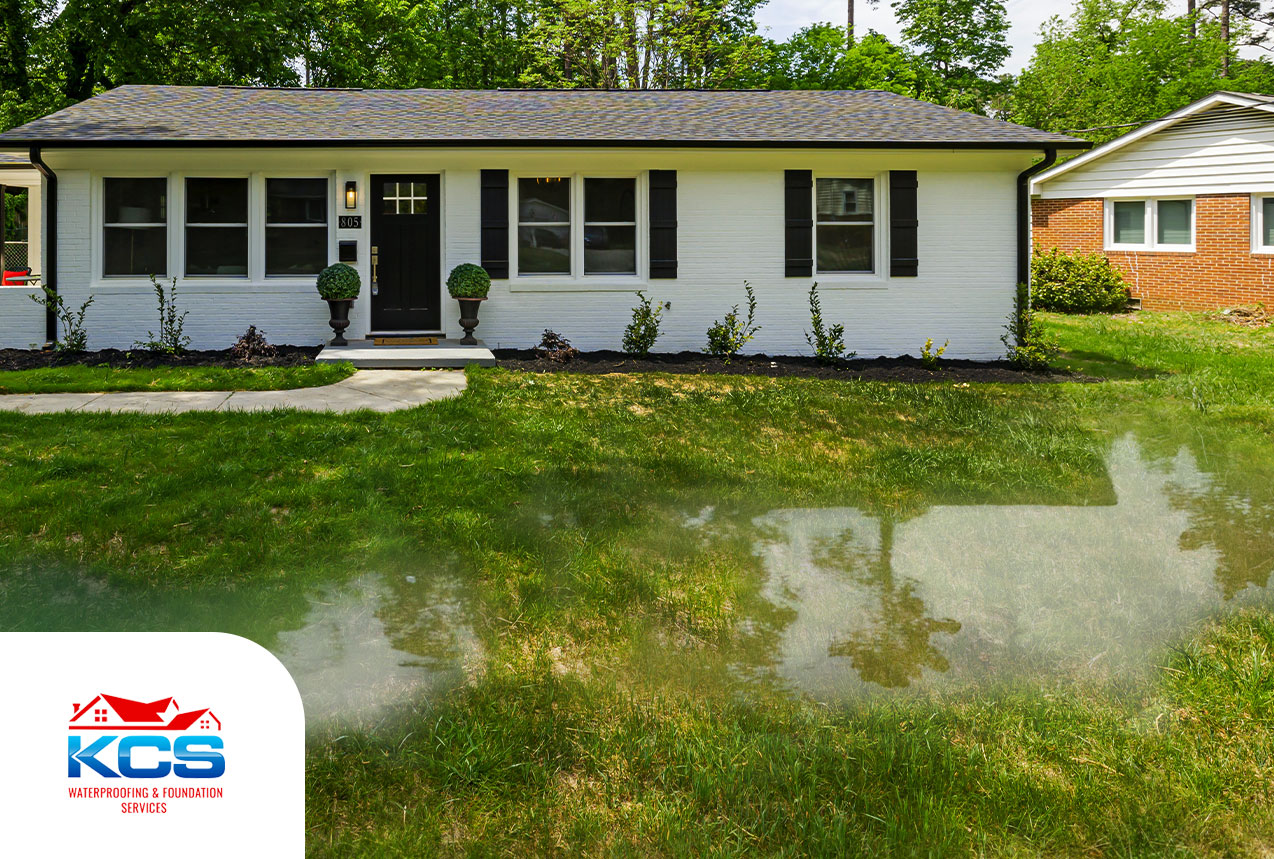Water is such a funny thing. On one hand, it’s this absolute miracle worker, giving life to everything around us. I mean, what’s a morning without a refreshing shower, or a sunny day without a cool glass of water? But on the other hand, it can be a real troublemaker, especially when it decides to throw a party in our yards without an invite. If you’ve ever stepped out into your garden, only to be met with those annoying puddles, you’ve probably sighed and thought, “Oh great, why’s there always pooling water around my house?” we’ve been there, and it’s frustrating. So, if you’re pulling out your hair over this soggy situation, this guide is just the thing you need. We’re in this together, after all.
The Risks of Water Pooling Around Your Yard
Standing water in your yard might look like a temporary inconvenience after heavy rain, but trust me, it’s a lot more sinister than that. First off, think about those pesky mosquitoes. Give them a small pool of stagnant water, and it’s like handing them the keys to their dream home. Before you know it, they’re buzzing around, having a party, and using that water to increase their family size. And let’s be real, no one likes mosquito bites or the idea that they can bring diseases right to our backyard.
Then there are our lovely green buddies – our plants. They need water, sure, but too much of it, and they’re gasping for breath. Imagine you’re wearing wet shoes for days; it’s uncomfortable, right? That’s how plants feel with their roots constantly submerged in water. Eventually, this can lead to something called root rot, which is pretty much the endgame for them. Watching your green paradise turn into a wilted mess isn’t something any gardener wants.
Water might seem harmless, but over time, it’s like that persistent salesperson who just won’t take a hint. It keeps pushing and probing, finding its way into tiny cracks and making them bigger. And that’s a recipe for big problems down the road, from structural issues to the creepy world of mold in basements. If you’ve found yourself wondering, “Why is there pooling water around my house?”, this blog post is here to provide answers and solutions.
Why is Standing Water a Problem?
Standing water isn’t just an eyesore; it’s a breeding ground for mosquitoes, can damage your plants, and if close to your home, can compromise your foundation. When you see pooling water around your house, it’s essential to address it before it turns into a significant issue. Our gardens are a bit like a bathtub, and like any good tub, there’s usually a way for water to flow out when it gets full. This is where drainage comes into play. If our garden’s drainage system isn’t working correctly, it’s akin to having a blocked drain. Water can’t escape and ends up pooling, leading to that swampy yard situation none of us like. Proper drainage ensures water flows away from the garden, so it doesn’t end up looking like a mini pond.
Every garden has its highs and lows—literally. Some spots are just naturally a bit lower than others. These dips, or depressions, can become natural collection points for water, especially after a rainstorm. Think of them like little craters or bowls in the ground. They’ll hold onto water until the sun (or good drainage) takes it away. Smoothing out these areas can help avoid these natural puddles.
Another important reason is clogged gutters. Gutters are those nifty channels running along our roofs, collecting and directing rainwater away from the house. But if they get clogged with leaves or debris, or if they’re not set up correctly, they can dump that water straight into our gardens. That’s like pouring buckets of water right next to our homes, which can lead to not just garden flooding, but other issues like basement leaks. Keeping gutters clean and ensuring they point water away from our garden is crucial.
Soil that is hard is another culprit that can cause water pooling around your yard. Imagine trying to pour water on a concrete path. It’s not going to soak in; it’s just going to sit on the surface. When soil in our garden gets super compacted and dense, it behaves similarly. Instead of absorbing rainwater or water from our hoses, it resists it, leading to surface pooling. Loosening up that soil, maybe by tilling or aerating, can help it breathe and absorb water better which we will discuss later in this blog. Also, while we are talking about soil, lets talk about plants! Water is to plants what food is to us. But just like we can overeat or not eat enough, we can make mistakes with watering. Drowning our plants in too much water or leaving them parched with too little can both lead to issues. The former can cause root rot and puddling, while the latter can stress our plants. It’s all about finding that watering sweet spot for our green buddies.
5 Ways to Prevent Standing Water
Now that we’ve understood the causes let’s delve into how to fix them
Mastering Drainage
The solution to water problems often starts below the surface. A French drain, for instance, isn’t just any trench. It’s a specially designed system filled with gravel and a pipe, lying stealthily beneath your garden. Its mission? Quietly channeling water away from spots you don’t want it. For places that seem to be water magnets, a catch basin enters the picture. Picture a superhero grating on the surface that, instead of capturing villains, quickly whisks water away. It’s effective, efficient, and downright essential for chronic puddle spots.
The Grading Game
Think of grading as giving your garden some direction—literally. By ensuring your yard gently slopes away from your home, you’re creating a path for water to follow. But grading isn’t just about function; it’s an art form. When done right, it adds layers and dimension to your garden, creating a visual masterpiece that just so happens to be wonderfully water-efficient.
Gutter Management 101
If your garden were a castle, gutters would be the guards. They have a crucial job: protect against water onslaughts. But they need maintenance. Regular check-ups to clear out leaves, nests, or any other debris are essential. Their angle is also vital; a slight tilt ensures water flows smoothly. And for those wanting an upgrade? Gutter guards are like elite protectors, ensuring only water gets through, keeping potential clogging nuisances at bay.
Aeration
Every now and then, our soil needs a little TLC. When it’s packed tight, water struggles to permeate, causing that unwanted pooling. Enter aeration. This process, which is like giving your garden tiny breathers, involves poking small holes in the ground. These holes allow water, and essential nutrients, to penetrate deeper, reaching plant roots and ensuring a lusher, healthier garden.
The Art of Watering
Watering isn’t just about turning on a hose; it’s about nurturing. Each plant species has its own unique thirst level. Drenching them might seem like a kind act, but it can drown their roots. On the other hand, too little can leave them parched. Here’s where a moisture meter becomes a gardener’s best friend, acting like a translator between you and your plants, signaling when they’re yearning for a drink.
Wrapping Up
Addressing standing water is like solving a mystery. You’ve got to understand the culprits, find clues, and then act. With the strategies laid out above, not only will your garden be puddle-free, but it’ll also thrive. And hey, if it all feels a bit overwhelming, there’s no shame in calling in the pros. Kentuckiana Contracting Services is ready to step in, offering specialized expertise to ensure your garden is both a beauty to behold and wonderfully water-wise.
No more letting puddles play spoiler. Contact Kentuckiana Contracting Services today for a free estimate, and together, let’s make your garden the envy of the neighborhood.

